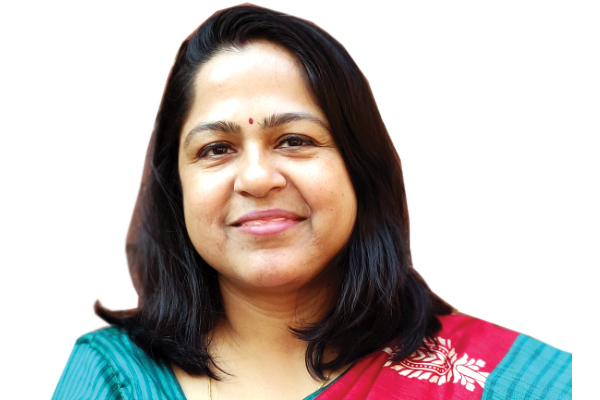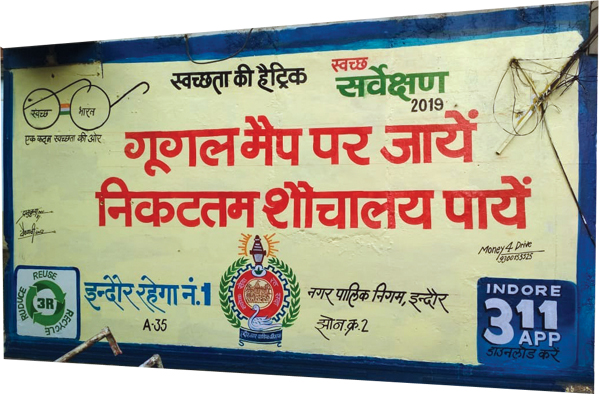
For a long time now, practitioners in the urban development sector have been advocating that for any programme or project to be sustainable and robust, it is imperative to ensure buy-in from its stakeholders. This involves engagement with stakeholders to diagnose a challenge and jointly find solutions, writes Paramita Datta Dey, Program Lead -Sustainable Cities Integrated Approach Pilot, NIUA.
India’s commitment to SDG 11.3 promotes that “by 2030, the country will enhance inclusive and sustainable urbanisation and capacity for participatory, integrated and sustainable human settlement planning and management in all countries”. The landmark 74th Constitutional Amendment Act, enacted on June 1, 1993, empowers Urban Local Bodies (ULBs) to implement local development works and solve other issues through a participatory approach. This policy lever gives power to citizens to participate in decision making at the ward level through ward committees and ‘area sabhas’. However, in many cases, the devolution of responsibilities was not accompanied by the devolution of funds. Hence change on the ground has not been as envisaged. Some of the common challenges include limited autonomy of ward committees, inadequate representation of representatives from the civil society and inadequate platforms for engagement of citizens. In some states like Kerala and West Bengal, the legislative provisions have been appreciated.

Awareness campaign on waste segregation
The Annual Survey of India’s CitySystems (ASICS) 2017 has evaluated the quality of governance in cities. It assesses 23 Indian cities spread over 20 states, based on 89 parameters. One of the important takeaways from the report is the absence of platforms where citizens can participate in civic matters in their neighbourhoods. It articulates that this can be remedied by enacting ‘public disclosure’ and ‘community participation laws’. These laws were rolled out as part of reforms mandated for ULBs that received funding from the Jawaharlal Nehru National Urban Renewal Mission (JNNURM) but met with limited success in many states due to lack of devolvement of funds. The concept of ‘area sabhas’ or consortiums linked to ‘ward committees’, ensured local engagements at the ward level and was mandated as a part of the Community Participation law. Despite the constitutional provisions regarding the devolution of power, implementation on the ground has not happened as envisaged. According to a recent report on urban democracy by the Praja Foundation, nine cities out of the 29 cities surveyed by them, have functional ward committees. As per the Annual Survey of Cities Report (ASICS 2017) published by Janaagraha, only Hyderabad and Guwahati have constituted ‘area sabhas’ in all wards. Due to this, participatory planning at the local level is constrained.

Participatory engagement in programmes has shown success on-ground when implemented in a mission mode. A case in point is the Swachh Bharat Mission (SBM). The mission is a living example of how community engagement has led to its success and has been credited to have driven behaviour change at scale. Let us examine the reasons behind SBM’s success.
Leadership on top:

The call to action from the country’s Prime Minister was crucial to mobilising support and participation from stakeholders across various sections of society. Thus, the campaign turned into a “Jan Andolan” or people’s movement.

Capacity building programme for state & ULB officials
Allocation of sufficient resources:
The programme was backed with adequate resources and a budget of over US $20 billion.
Concept of speed and scalability factored into the design of the programme:
The program was designed keeping scalability in mind with an objective to reach everyone, everywhere. SBM encouraged the creation of several sustainable and demonstrative models emphasising quality service delivery.
Persistent engagement with executors on ground:
Systematic and periodic convening and regular interactions were organised by the top leadership at the centre (Mission Director) with those at the state level (State Mission Directors), city managers (commissioners). This was instrumental to drive the sanitation agenda in cities. A lot of the success is attributed to the joint and collaborative efforts of the elected leaders (mayors, chairpersons, councillors) and administrative heads (municipal commissioners) who worked in tandem in cities and ensured continuous involvement of citizens.
Consistent capacity building:
Various cross-learning platforms, workshops, training programmes and site visits have played a vital role in ensuring interactive peer-to-peer learning and demonstration of on-ground action. This has created a cascading effect on scaling up success stories and fuelled innovation.

Awareness on SBM through wall messages
Leaving none behind:
SBM was designed with the citizen at the core. It promoted the use of culturally ingrained popular mass media drivers like street theatres, folk art, music and movies. It used the high penetration of mobile phones in India and thus developed tools like mobile apps to ease access to safe and better sanitation and also disseminate the messages of cleanliness or swachhta. The main thinking behind this was more the triggers and recall, faster would be the change in behaviour. It also fostered women and children as change agents for speed and scale.
Celebrating success:
The annual Swachh Survekshan and awards at various levels created a sense of accomplishment for achievers. Not only did these achievers inspire aspirant states and cities to strive more, but they also encouraged them to work on innovations by tweaking existing practices. Since the competition was annual, it gave cities and states to learn from their and others mistake, improve and leapfrog. The Swachh Survekshan also evolved with its participant cities from measuring outputs and outcomes to emphasising sustainability, institutionalisation and integrated and circular approaches.

Street play performance to spread awareness on Swachh Bharat Mission
The Way Forward
In a country like India, with its scale and diversity, success can be sustained when it is accompanied by institutional changes. An urban service, like sanitation, is a state subject in India and states have competing priorities and levels of development, even if the urban services improvement projects are funded by the Centre. Therefore, unless the 74th Constitutional Amendment Act is fully implemented with functions, funds and functionaries, sustaining the success of any mission will remain to be a challenge, which may lead us to lag behind in achieving the goals set by the SDGs.
Be a part of Elets Collaborative Initiatives. Join Us for Upcoming Events and explore business opportunities. Like us on Facebook , connect with us on LinkedIn and follow us on Twitter, Instagram.











